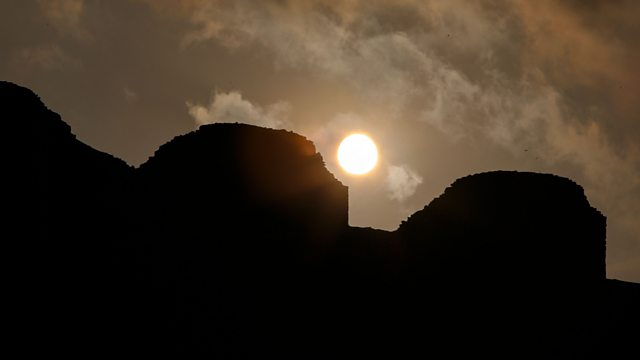Ancient Peruvian solar observatory added to Unesco list
A priest would have used 13 massive stone blocks to plot the sun's position - and so tell the exact date... more than 2,000 years ago.
The Chankillo Solar Observatory near Casma, Peru is monumental, ancient (it's about 2,300 years old), and it's just been added to a list of the world鈥檚 most culturally significant places by Unesco.
Its most significant feature is 13 huge blocks lined up on a hill. As the sun came up behind them, they could be used to tell the calendar date to within one or two days.
But while modern Peruvians were aware of the site, its use as a huge solar calendar was only recognised just over a decade ago, by Professor Clive Ruggles, Emeritus Professor of Archaeoastronomy at the University of Leicester.
"There was an observing point. There was a place where the high priest would go and would look out and see these 13 towers on the horizon. And basically by seeing where the sun rose any time in the year, you would know where you were in the year exactly to within a day or two. And that's extraordinary. There's simply nothing like it anywhere else in the world."
(Photo: The sun is seen behind the Chankillo Solar Observatory near Casma, Peru. Credit: AFP)
Duration:
This clip is from
More clips from Newsday
-
![]()
Liam Payne: Fans mourn death of One Direction singer
Duration: 03:35
-
![]()
Sudan's footballers provide 'joy amongst the chaos'
Duration: 04:00
-
![]()
Hurricane Milton: The residents deciding to stay, or evacuate
Duration: 02:59
-
![]()
Mpox spreading rapidly in Burundi
Duration: 03:21






